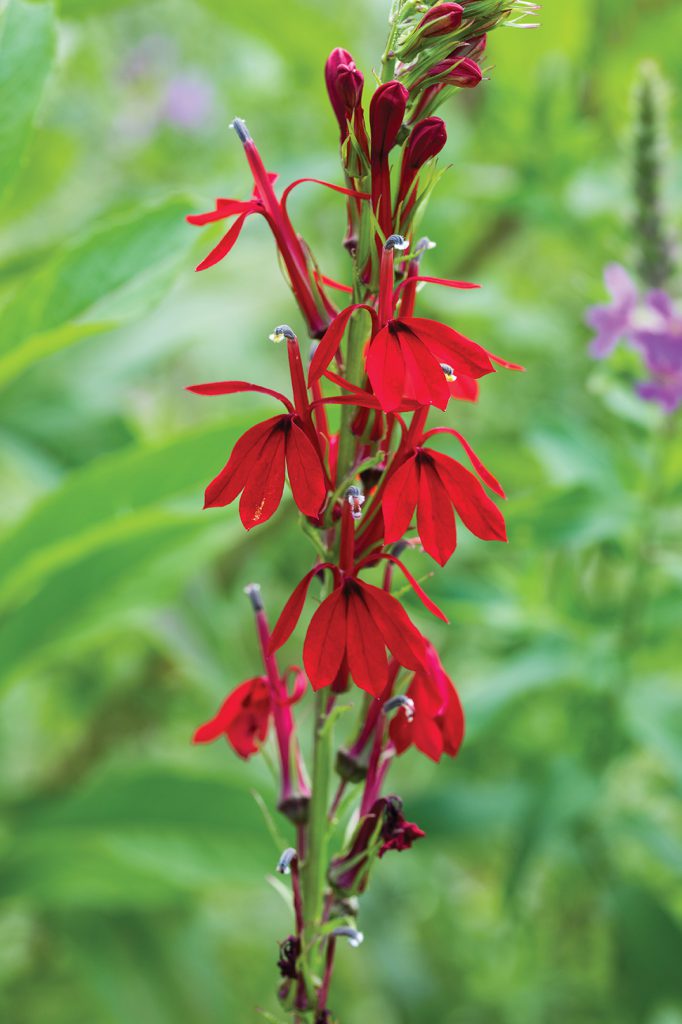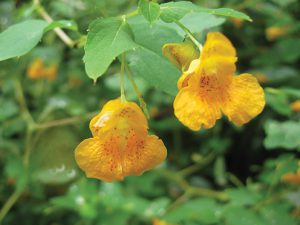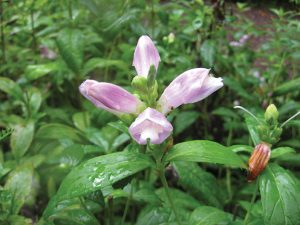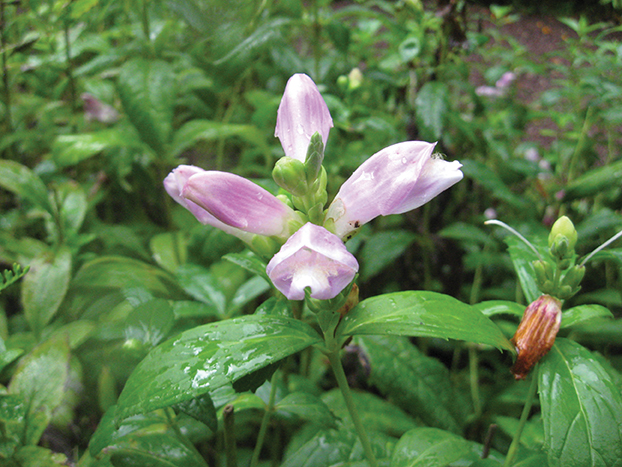
Streamside Walking
Discover various flora and fauna throughout the year
By Paul Spitzer

Cardinal Flowers. Image Credit: Christopher Zajac.
Streamside walking connects us with the splendors of flowing water on our Water Planet. It is a four-season practice; and to begin in winter is good. Biology is at low ebb, and the bare woods are dormant. But vigorous life is manifest in stream flow and sound. Winter sunlight shines down through leafless forest patterns and open meadow landscapes, illuminating the play of water. In calmer pool sections, one looks down through the water’s diffraction of sunlight on endless patterns of sand and gravel. This is an introduction to nature’s stained-glass windows, which can transport you and inspire contemplation at all seasons.
Early spring blooms in the streamside world. In swampy bottoms, Skunk Cabbage rises in bright green banners, so one knows where not to walk. On better-drained riparian bottomlands, Spicebush groves offer early small chartreuse flowers. These may be visited by Spring Azure butterflies, celebrated in Robert Frost’s “Blue-Butterfly Day.” Blooming above are the eponymous tree flowers of the Red Maple, pollinated in part by spring winds. These are the soft optimistic colors of early spring.
When summer comes on, celebratory aquatic insects appear on the water’s surface, and flying above: Whirligig Beetles, Water-striders, and Ebony Jewelwing damselflies, black-winged, with long slender emerald-green abdomens. Low-water hot-weather interludes invite the walker onto sand and gravel bars, and then into the stream. This is the visitor’s most intimate season, wearing bathing suit and reef walkers. Cool pools provide relief from heat and humidity. Aldo Leopold wrote of how the stream “paints,” growing flowers on the exposed banks of summer: So we encounter the brilliant red of Cardinal Flowers, and the pink, purple, or white eponymous flowers of the Turtlehead plant. These flowers often grow in a streamwide light gap, from which one can admire the neighboring forest, or streamside meadow life. The forest itself may be humid and buggy, but it offers shade and a leafy profusion of green colors. Consider this your Free Tropical Vacation!

Jewelweed. ImageCredit: Paul Spitzer.
In level terrain, streams can permeate moist flats to create wet meadows. These connoisseur habitats are rich in diverse plants and pollinating insects. Favorite sites of mine have masses of blooming Jewelweed in August and early September. These flowers attract constant hummingbird activity. Later in September, the hummers have migrated and the flowers have gone to seed. Jewelweed is famous (among naturalists) for shooting its seeds some distance. Walking such a site at that precise season, I generate a floral “shooting gallery” of small seed explosions.
Full autumn brings a bouquet of rich fragrances, and colored leaves in the flowing water. Some autumn stream fishing can be surprisingly good, as the stream rises and normally shy Brown Trout become reproductive. Trout fishing has always been a classic connection: one “reads” the stream habitat—deciding where to cast. I wade very quietly upstream against the current, so as not to flush the shy fish. The trout face the current, so you are stalking them from behind. You cast well above where you think the fish might be, and retrieve your lure or fly through that hopeful patch of habitat. Exploring the now-chilly stream in protective chest waders, I view my repeated casts as a mantra; and sometimes I would almost rather not catch a fish, so I can maintain my transcendent focus and quiet connection with the stream world.

Turtlehead. ImageCredit: Paul Spitzer.
The East is blessed with rain, which creates diverse bodies of water, flowing and still. Eastern brooks vary from alpine to lowland springs; from boreal habitats to the Deep South. Some meander slowly, and others hurry down from a height. Such a descending valley brook, if not too steep, is an adventure. Falling water generates sound and stream fragrance—a kinetic and sensory experience. I sit quietly by a plunge pool, taking it all in. Then my gravity-assisted descent continues, with a shuttle vehicle for return at some strategic point downstream. My favorite brook in northern Vermont exits a loon pond, then flows down a secluded forest valley to join a river at a small town. (Except for the loons, this could be said of countless streams in the Connecticut River watershed.) It is rightly named Pond Brook. Its cold, oxygenated falling waters support a population of very small native Brook Trout—to be admired as a colorful gift of nature, and too small for angling.
In the well-watered East, streamside walking is a revelatory gift of life.
Paul Spitzer, PhD, lived in the Connecticut River valley during his formative years as a naturalist and ecologist. He began his Osprey–DDT research as a student at Wesleyan University. He continued his doctoral research on northeastern osprey population biology at Cornell. He has accomplished conservation biology projects worldwide. He is currently finishing a book about loons.

